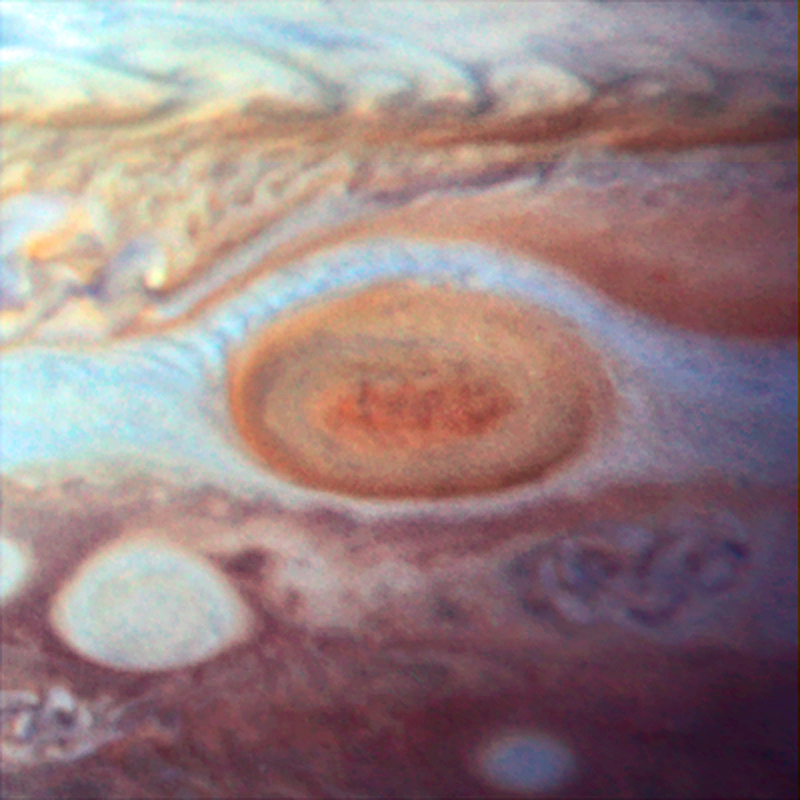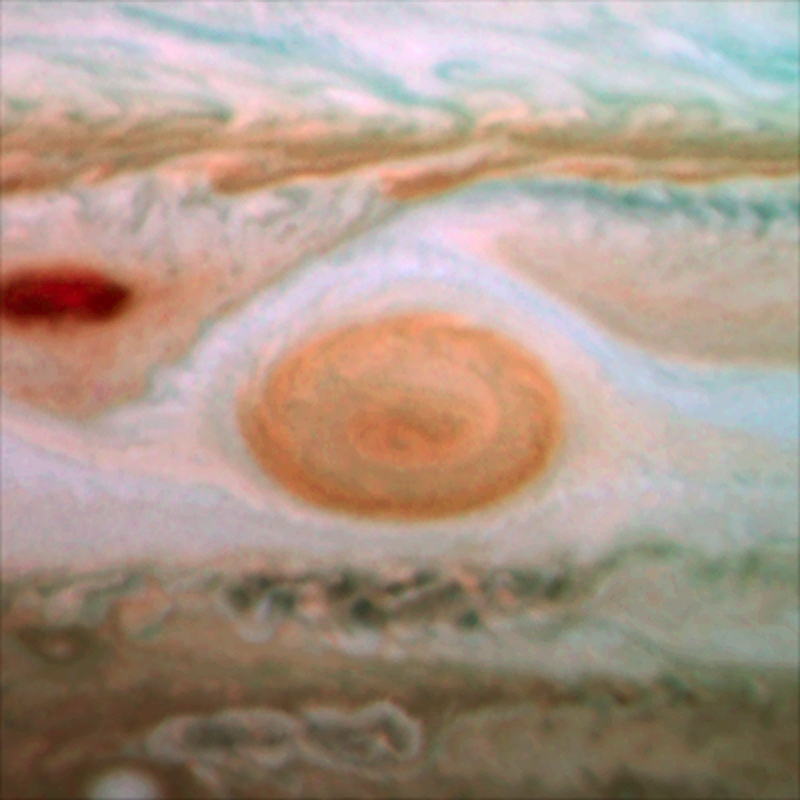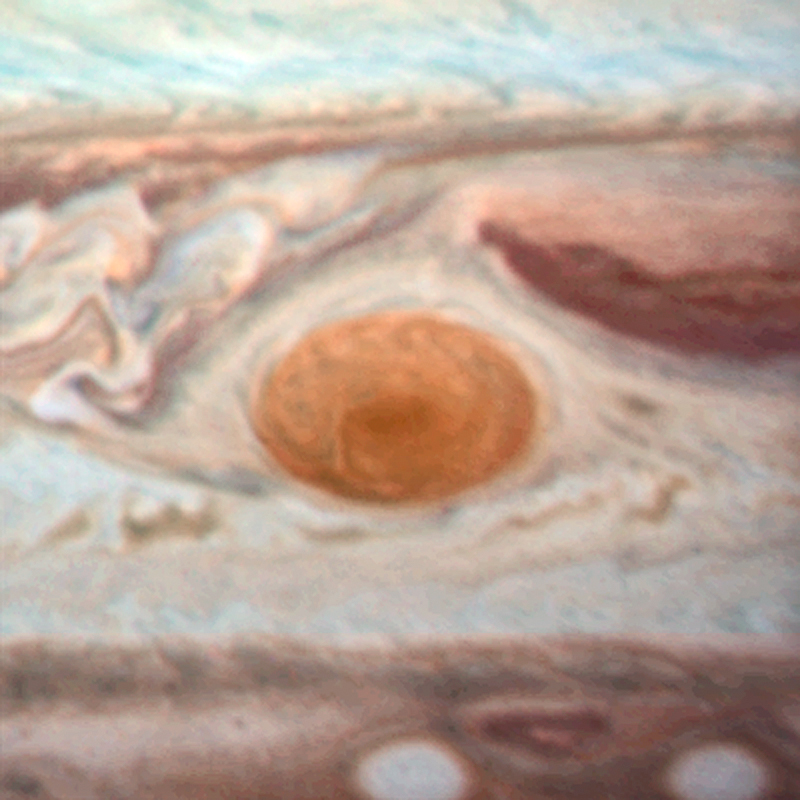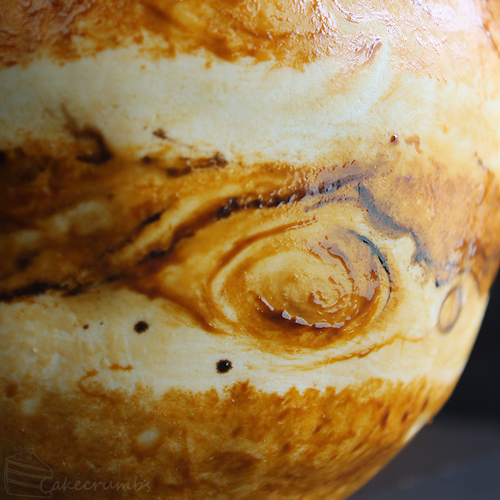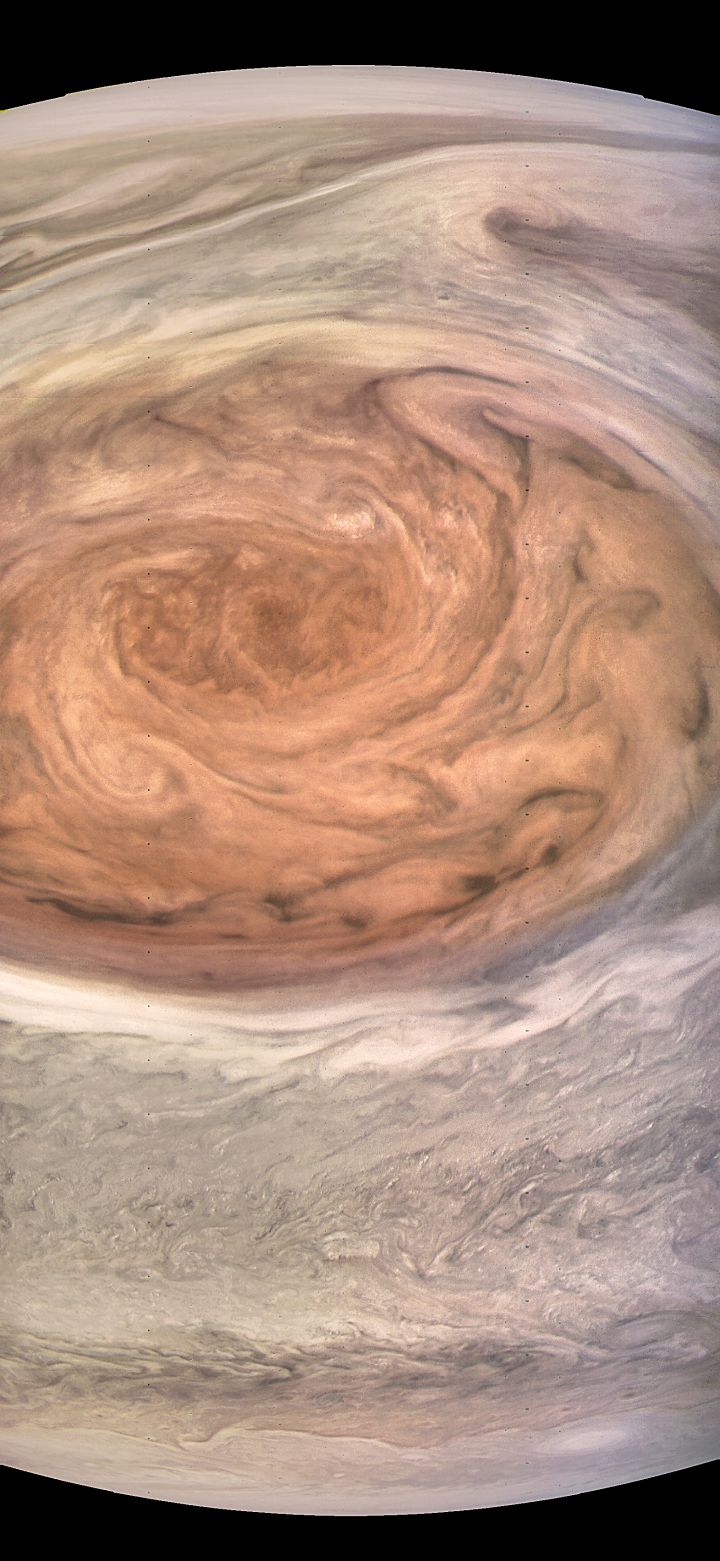Jupiter's Great Red Spot: Photos of the Solar System's Biggest Storm
Jupiter and the Great Red Spot
Jupiter's trademark Great Red Spot — a swirling anticyclonic storm feature larger than Earth — has shrunken to the smallest size ever measured. Astronomers have followed this downsizing since the 1930s. Image released May 15, 2014. [See full story.]
Jupiter's Great Red Spot (1995, WFPC2)
Jupiter's Great Red Spot seen in 1995. Image released May 15, 2014. [See full story.]
Jupiter's Great Red Spot (2009, WFC3/UVIS)
Jupiter's Great Red Spot in 2009. Image released May 15, 2014. [See full story.]
Jupiter's Great Red Spot (2014, WFC3/UVIS)
Jupiter's Great Red Spot in 2014. Image released May 15, 2014. [See full story.]
Compass and Scale Image for Jupiter Great Red Spot
Compass and scale image for Jupiter's Great Red Spot. Image released May 15, 2014. [See full story.]
Jupiter's Tasty Great Red Spot
Jupiter's "Great Red Spot" first attracted cake-maker Rhiannon to the challenge of creating this planetary layer cake. Image uploaded on Aug. 27, 2013.
Jupiter's Little Red Spot: Best Color
This amazing color portrait of Jupiter’s “Little Red Spot” (LRS) combines high-resolution images from the New Horizons Long Range Reconnaissance Imager (LORRI), taken at 03:12 UT on February 27, 2007, with color images taken nearly simultaneously by the Wide Field Planetary Camera 2 (WFPC2) on the Hubble Space Telescope.
The Little Red Spot is the second largest storm on Jupiter, roughly 70% the size of the Earth, and it started turning red in late-2005. The clouds in the Little Red Spot rotate counterclockwise, or in the anticyclonic direction, because it is a high-pressure region. In that sense, the Little Red Spot is the opposite of a hurricane on Earth, which is a low-pressure region – and, of course, the Little Red Spot is far larger than any hurricane on Earth.
Breaking space news, the latest updates on rocket launches, skywatching events and more!
Great Red Spot
Another stunning close-up view of Jupiter's trademark storm.
Secrets of Jupiter's Great Red Spot Revealed in New Weather Map
Thermal images from ESO’s Very Large Telescope (VLT) and other ground-based telescopes show swirls of warmer air and cooler regions never seen before within Jupiter’s Great Red Spot. The image on the left was obtained with the VISIR on the VLT in Chile on 18 May 2008. The image on the right was obtained by the NASA/ESA Hubble Space Telescope on 15 May 2008.
JunoCam Red Spot Four
This enhanced-color image of Jupiter's Great Red Spot was created by citizen scientist Kevin Gill using data from the JunoCam imager on NASA's Juno spacecraft.

Space.com is the premier source of space exploration, innovation and astronomy news, chronicling (and celebrating) humanity's ongoing expansion across the final frontier. Originally founded in 1999, Space.com is, and always has been, the passion of writers and editors who are space fans and also trained journalists. Our current news team consists of Editor-in-Chief Tariq Malik; Editor Hanneke Weitering, Senior Space Writer Mike Wall; Senior Writer Meghan Bartels; Senior Writer Chelsea Gohd, Senior Writer Tereza Pultarova and Staff Writer Alexander Cox, focusing on e-commerce. Senior Producer Steve Spaleta oversees our space videos, with Diana Whitcroft as our Social Media Editor.

